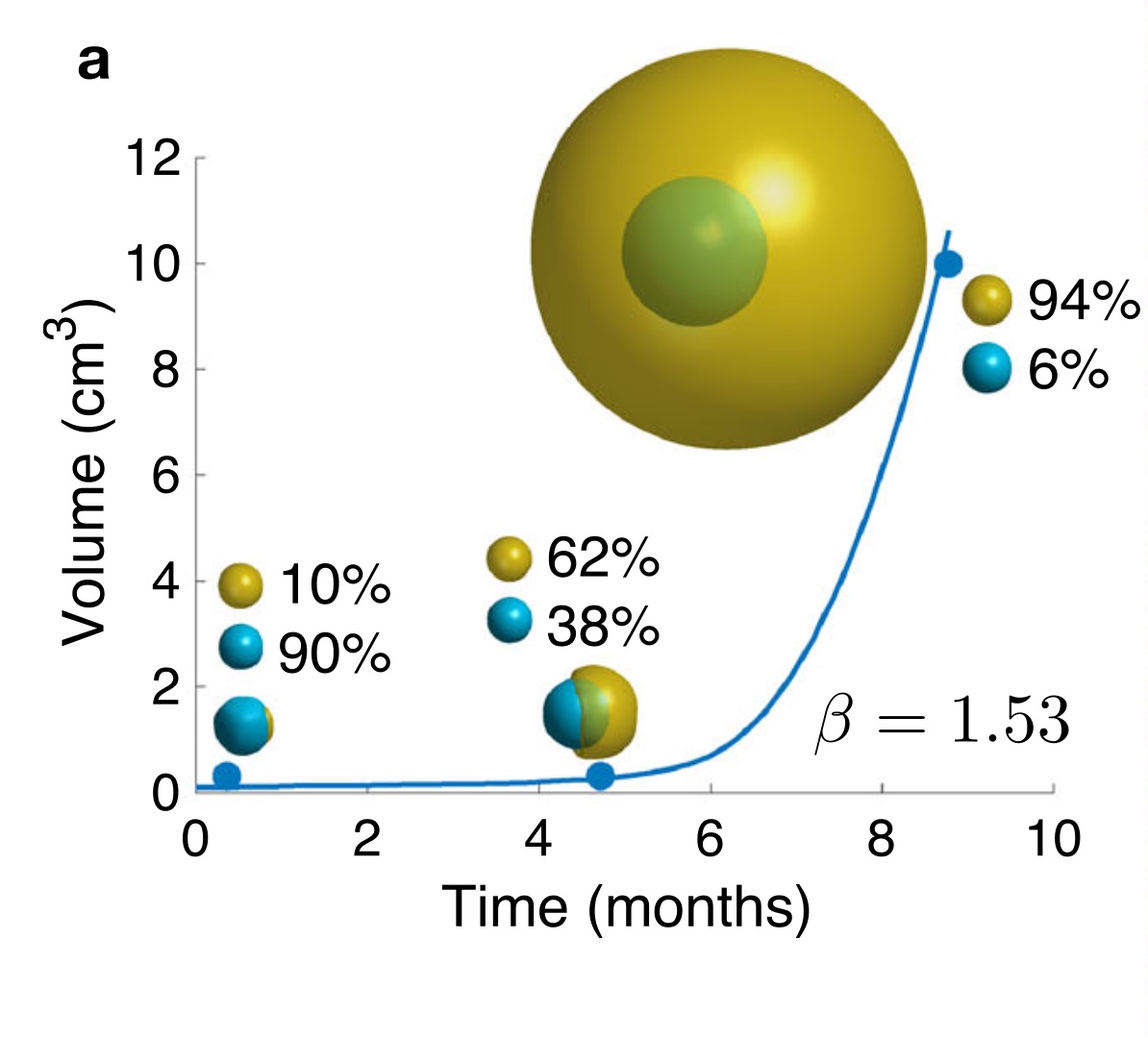News & Events

Tumor growth is the result of the interplay of complex biological processes in huge numbers of individual cells living in changing environments. Effective simple mathematical laws have been shown to describe tumor growth in vitro, or simple animal models with bounded-growth dynamics accurately. However, results for the growth of human cancers in patients are scarce.
MOLAB researchers, together with several clinical collaborators, mined a large dataset of 1133 brain metastases (BMs) with longitudinal imaging follow-up to find growth laws for untreated BMs and recurrent treated BMs. Untreated BMs showed high growth exponents, most likely related to the underlying evolutionary dynamics, with experimental tumors in mice resembling accurately the disease. Recurrent BMs growth exponents were smaller, most probably due to a reduction in tumor heterogeneity after treatment, which may limit the tumor evolutionary capabilities. In silico simulations using a stochastic discrete mesoscopic model with basic evolutionary dynamics led to results in line with the observed data.
The results allow for further understanding of the development of tumor heterogeneity and suggest the potential use of a macroscopic variable (the growth exponent) as a surrogate of the underlying tumor evolutionary dynamics.
Ocaña-Tienda et al, Growth exponents reflect evolutionary processes and treatment response in brain metastases, npj Systems Biology and Applications volume 9, Article number: 35 (2023)
Last News and events

|
Virtual meeting
Tuesday December 09, 2025
|

|
Nature journal
Wednesday December 03, 2025
|

|
Mujeres y cia
Tuesday December 02, 2025
|

|
MOLAB
Monday December 01, 2025
|

|
Facultad de Ciencias, Universidad de Cádiz
Friday November 21, 2025
|














